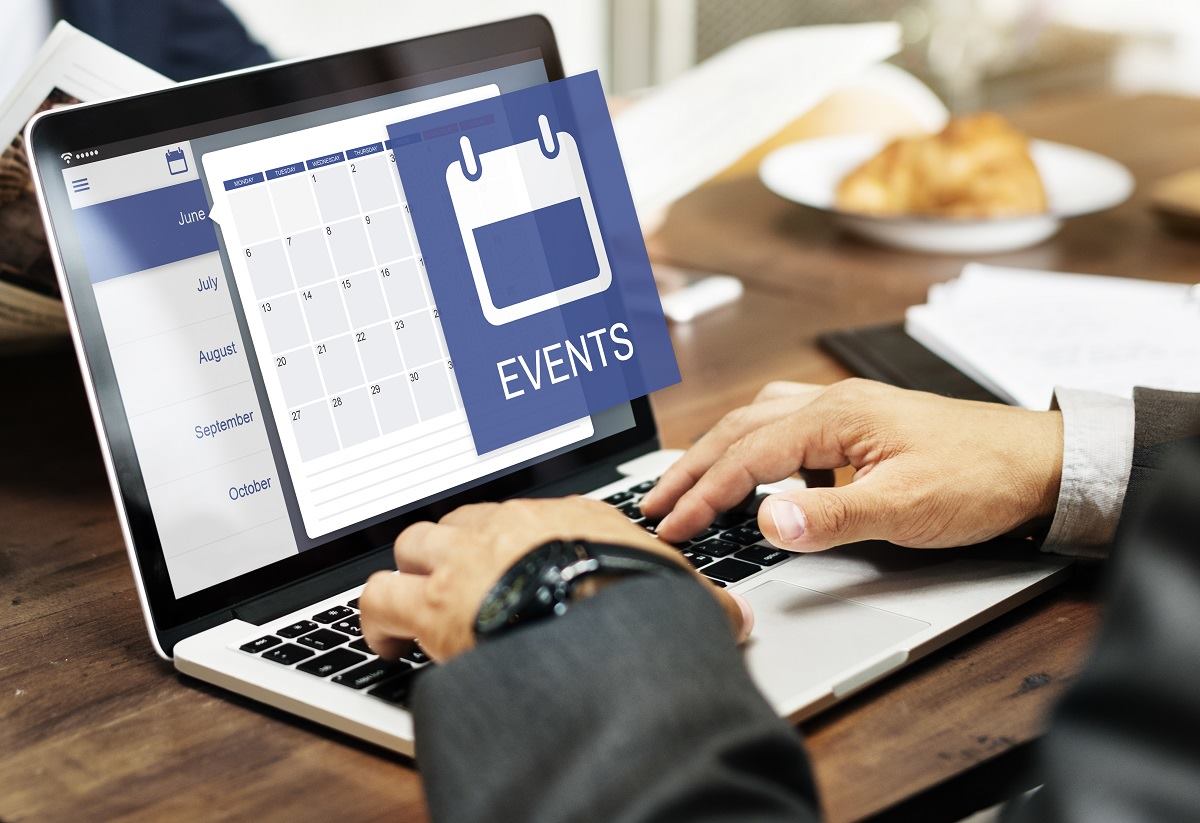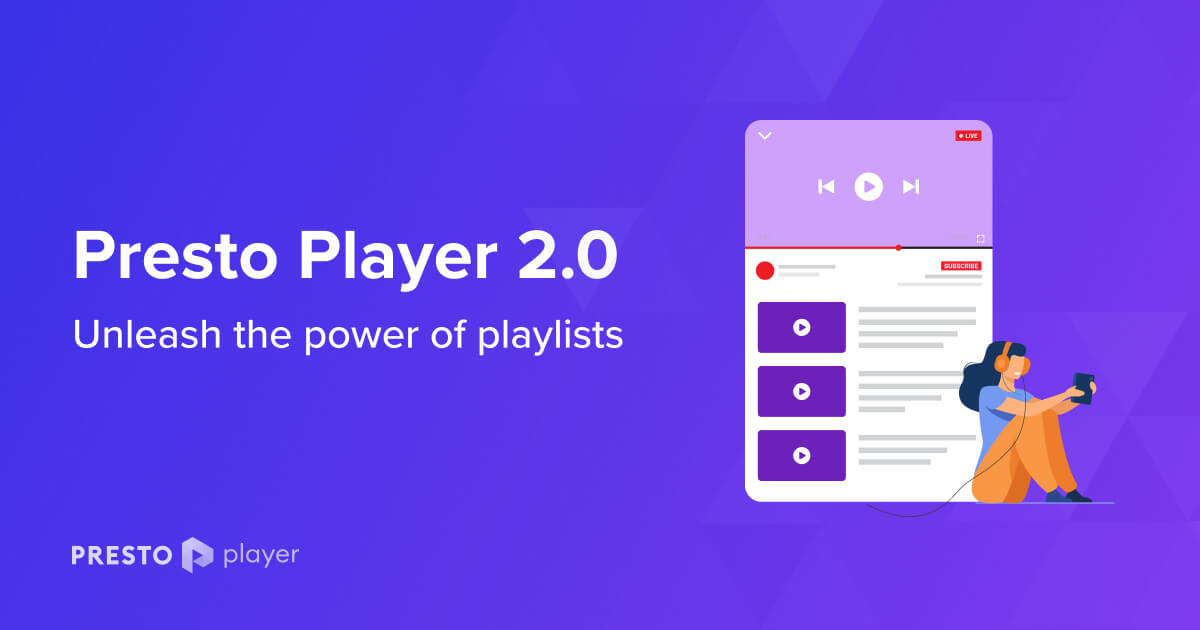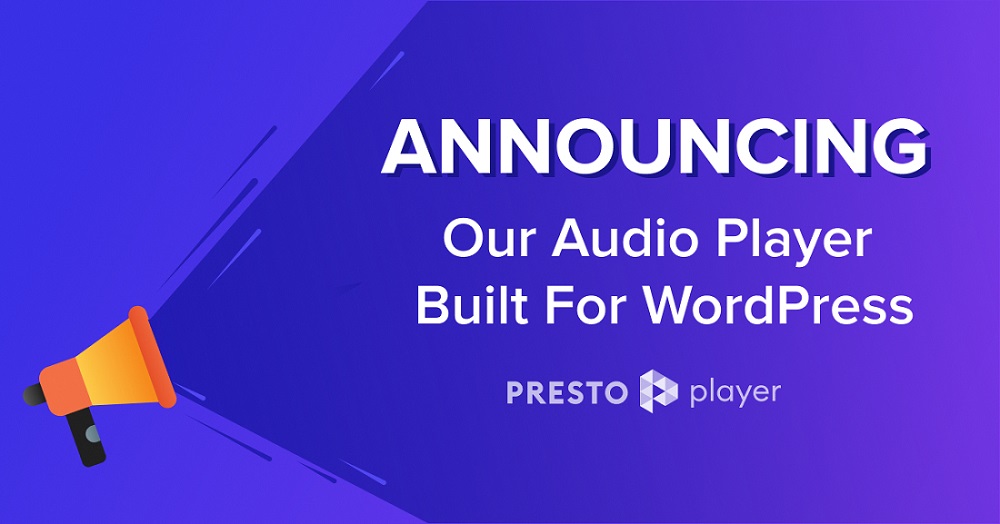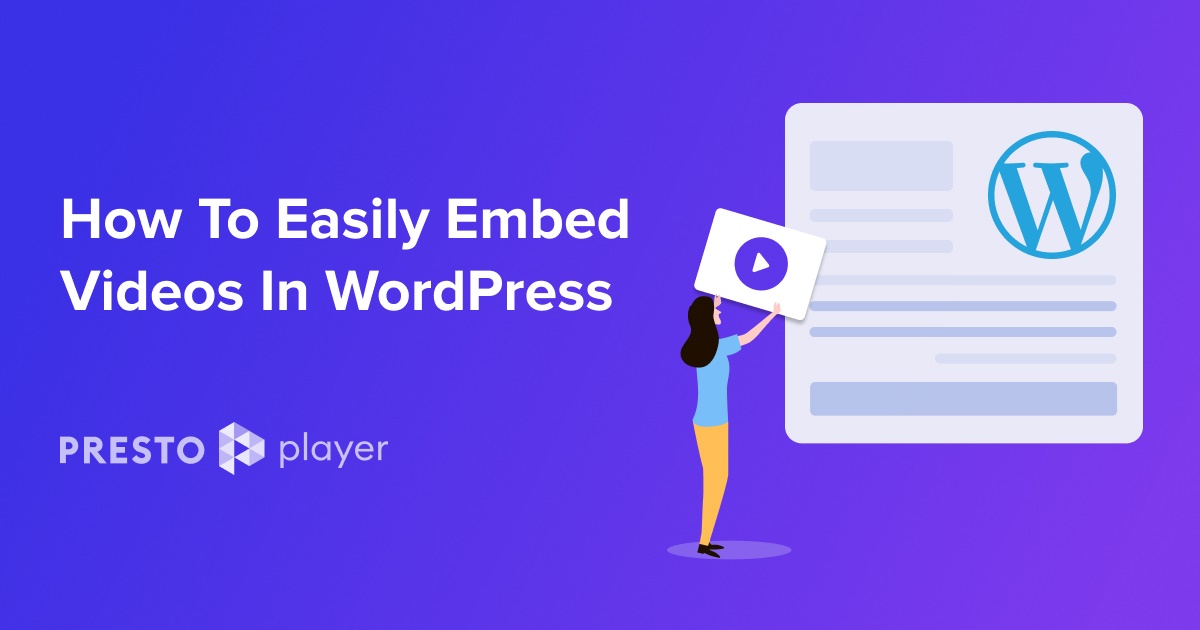You might be surprised to learn that virtual business events were not always as popular as they are right now.
The COVID-19 pandemic necessitated the idea of virtual events. It is amazing to think that in just a couple of years, the idea that conferences, exhibitions, and similar business events could happen online went from fringe to mainstream.
This was made possible by the platforms and improved connectivity that simplified organizing the events.
Add in the rise of social media platforms and the ease of reaching new audiences means that you can now host these events with great confidence and see significant gains for your business.
In this blog, we’ll detail what type of virtual events you can host and then share some tips for offering a great experience during your virtual events.
What’s a Virtual Event?

Put simply, virtual events are online sessions that have replaced traditional in-person meetings, exhibitions, and conferences. These virtual events can be open to everybody or are invitation-only.
The good thing about virtual events is that there are very few restrictions on how and when you can hold them.
Some virtual events are a simple landing page and video presentation, either live or prerecorded.
More sophisticated events will use a dedicated event platform with landing pages, a full 3D virtual conference hall, a mobile app, chat channels, meeting rooms, video channels and the opportunity to watch some presentations live and catch up with others you may have missed later.
Why Should You Host Virtual Events?
If you aren’t convinced yet about the utility of virtual events, here are three reasons why you should start planning one right now.
COVID is Still A Thing
The COVID situation is still uncertain, and nobody can say for certain when in-person events could be safely held again. Until then, you still need a way to get people to notice your brand.
Virtual events fill this gap and help the audience remain connected with your brand.
Little to No Budget Required
Virtual events can be held at a fraction of the budget required for in-person events. The events can be hosted for free (think Twitter Spaces and Facebook Live). Similarly, you would save on many costs associated with branding and event expenses, such as the venue.
There are premium virtual event platforms around, but even these are much cheaper than the huge costs involved with live events.
Open to Everybody (or not)
Virtual events are easier to attend because there are no travel and accommodation costs. Even in the case of paid events, the only expense for participants is the price of admission.
That’s why online events often draw more people, and the attendance is pretty high.
What Type Of Virtual Events Can You Host?
When you think about it, you can hold any type of event online. This is the secret behind the popularity of virtual events.
Here’s a small list of events that you can plan for your marketing calendar:
Conferences
Like their offline counterpart, virtual conferences are a great way to get a group of experts to discuss related themes. These events also present great opportunities for networking with new friends.
Workshops and Courses
Even before the COVID, workshops and courses had transitioned to the virtual space because of the ease of delivering the training material and feedback to the participants.
Webinars
Webinars are what many people mean by virtual events. Webinars come in many styles and formats, from a single presenter to a panel discussion around a topic.
Virtual Meetups
These can range from casual to semi-formal. Meetups have become popular for bringing remotely distributed teams together and networking.
Fireside Chats
Fireside chats are generally informal conversations between the presenter and their guests. In some cases, it is often a monolog that conveys the presenter’s point of view on the event’s main topic.
Interviews
Interviews have become the mainstay of virtual events because they can be conducted very efficiently. Similarly, interviews can be repurposed into several other formats such as blogs and opinion compilations.
Product Demonstrations
You may have seen brands demonstrating the features of their products in many formats, including animated videos and project run-throughs that use the product.
Ask Me Anything (AMA)
AMA originated at Reddit, where subreddit admins invited members or guests to answer the users’ questions. The idea has spread out to almost all platforms in various formats.
In many cases, the event is live, but many brands prefer to ask pre-screened questions.
Live Streams
Live streams are a newer addition to the virtual event lineup but have been around for years in other formats. The good thing about live streams is the element of informality that allows the viewers to pose questions and comments without worrying about breaking protocol.
How To Pick the Software Platform for Your Virtual Events
The software platform you choose for your event makes the most difference between a memorable and forgettable event. This space is pretty crowded as platforms emerge to fulfill the diverse requirements of users.
Choosing the right platform for your event can be challenging and costly, both in terms of money and time.
But that doesn’t have to be the case. When evaluating the platforms, ask yourself these questions:
- What is your budget?
- Would the attendees interact with the presenters, or would they get to see pre-recorded videos?
- How many sessions and associated events are there? And, would some of these happen at the same time?
- What do you want to happen once the event ends?
- What activities have you planned for the participants?
We hope that you now have a good idea of what virtual events are, what options you have when choosing a virtual format, and how to pick the right software for your virtual event.
A successful virtual event is not a random occurrence. It is the outcome of detailed planning, attention to detail, and keeping a close eye on things during the event. Let’s go through the three phases of virtual events to keep all this in perspective.
Tips For Planning Virtual Events

The planning stage can easily be forgotten in the rush to kick off the event. However, as experts will tell you, planning is half the battle.
When it comes to virtual events, you need to think carefully about the following factors:
Consider the Theme Very Carefully
The theme of the event is what attracts people. It should appeal to the target audience so they consider making time to attend the event.
The theme of the event should focus on the target audience’s pain points so that they make the event their priority.
The Question of Format
The format you pick for the event has a significant impact on the audience experience. The proper format could help the audience make the most of the event.
On the other hand, an inappropriate format could turn off the audience.
You can pick from the following list:
Single Presenter
Dual Presenters
Panel
Pre-recorded
Live
Hybrid (usually, a recorded talk followed by a live Q&A session)
Pick a Convenient Time and Day
The event should happen at a convenient time for the majority of participants. This could mean inconvenience for the organizers and presenters. However, it is a small price to pay for the event’s success. For those who couldn’t attend, record the event and send them the recording later on.
Think Mobile First
A good chunk of participants would be attending the event on their mobile. This means you have to make sure that the events page (particularly the registration page) should work perfectly on mobile devices.
It goes without saying that the event itself should work without a hitch, regardless of the device.
Be Consistent with Branding
Virtual events are a great way of making your brand stand out and stick in the mind of the audience. This means you should be consistent with using your brand colors and logos before, during, and after the event.
Utilizing a professional logo maker can ensure that your logo is polished and perfectly aligns with your brand’s visual identity.
Line Up Marketing Activities From the Start
The marketing of the event should be planned long before the event kicks off. Marketing is the one part of event planning that begins long before the event and continues until days afterward.
To Monetize or Not
The price of admission is an important factor in the success of any event, virtual or in-person. However, this is a tricky question.
If you charge an admission fee, you will exclude a large section of the interested audience. However, the people who paid would be very already interested in the event’s themes and your brand.
Charging adds exclusivity and helps cover the cost of the event, making it more likely to get stakeholders to buy into it.
On the other hand, if you open up the event for everybody, the number of attendees would sharply increase. Not everyone would be interested in what the presenters say or pitch to them.
The cost of free events needs to be covered somehow and if you aren’t charging entry, you’ll need to consider sponsorship, the business covering the cost, or something else.
Step 0: Dry Run to Avoid Surprises
Once you have everything planned out, you should dry run the event. This should be done at least a couple of days before the actual event to make sure everything checks out.
You test out all the moving parts by holding a mock session to find and replace any problems. Similarly, the speakers and presenters get the opportunity to practice and familiarize themselves with the platform, environment, and event technology.
During the Event
You have done your planning, and the big day has arrived. Your carefully planned event is about to happen in a couple of hours.
Give the Attendees a Heads-up Before the Start
The generally accepted practice is to engage the attendees via email. We suggest you adopt a three-email drip to give the heads-up.
The first email goes out 24 hours before the event. This email is a simple reminder with a calendar link and the platform details.
The second email should go out three hours before the event. This should have also had all the relevant information.
Finally, the last email should go out right before the event. This email should have an urgent-sounding subject line to induce action.
Engage the Audience Right Away!
As people join, it is a good idea to welcome them and acknowledge the early birds. This is an excellent tactic because there is always a chance that these people would share the event through their social media accounts.
Continue to Promote the Event
As the event progresses, you need to make sure the event gets the spotlight on social media. Use hashtags so the event pops us in relevant searches. Similarly, encourage the participants to mention the event using their own social media accounts.
Remember to Take Breaks
While planning the event, have each session followed by a break that allows attendees to digest the previous session and get ready for the next. This break is often essential during live events where you need time to swap one set of presenters with the next.
Instead of the blank space, you can retain the audience’s interest through fun activities such as quizzes and product demos.
Be Ready to Step In to Fix Issues
This is true for every event you plan or host. According to Murphy’s Law, things that could go wrong have a high probability of going wrong.
So, you need to be on your toes so that you can step in to rectify any issues and ensure continuity of the event.
After the Event
Even when the event ends, your work doesn’t. Now that the people have started to leave the platform, you have the last chance to grab their attention.
You still need to carry out four more activities to close the event and increase the chances of the success of the event.
Close with a Branded Call to Action
The very last message that the attendees should receive is a branded call to action for your product or service. This is an ideal time to make sure the audience remembers your message as the event’s final and most recent takeaway.
Send Out a Post-event Follow Up
A post-event thank-you note is always good manners. But more than that, it serves an important purpose. Since the event is still fresh in their mind, the attendees would give better quality feedback about the event.
Since the event is still fresh in their minds, attendees can provide higher-quality feedback, especially when compared to Qualtrics alternatives such as GuidedTrack or NICE. . This allows you to gain valuable insights that might not be readily available elsewhere.
Send Out Additional Resources
If the presenters mentioned any event-specific sources, it is always good to send them out a couple of hours after the event. This email also helps the reader recall the event and solidifies your brand’s reputation.
Consider sharing short snippets or even the whole video with your audience after the call has been finished, so those who couldn’t make it can see it as well.
If your videos are in another language but you are looking to expand your audience, you can translate audio files to English with simple online tools and present your webinar or product to a wider audience.
There are many ways to make your virtual events memorable and useful, so test several approaches and see what people respond to best.
Do An Event Review
Now that you have the attendees’ responses and the feedback from the participants and presenters, it is time to do an event post mortem.
This activity will help you understand what went right (and wrong) so that you can optimize your event hosting and planning checklist.
Also, this is the time to start planning how you’d repurpose the talks and content generated during the event to get additional mileage out of the event.
General Tips for Hosting Awesome Events

Like everything else, hosting virtual events requires practice. By doing it repeatedly, you finetune the process, evaluate the technology, and discover the themes that bring in the most participants.
At the close of this article, we’d like to present some tips that would help you better organize and conduct your events.
Focus on Community Pain Points
The number of participants is a valid measure of the success of any event. To see good attendance, you need to discuss the pain points troubling your target audience.
That is a great way of impressing them into taking out the time from their daily schedule.
Get the Right Hosts/Presenters
Like we said earlier, people might not know your brand, but they would surely know the leading names in the niche. By getting the top names in the industry as speakers or presenters, you ensure that the event is already a success.
Continue To Experiment With Technology
New products and platforms emerge in response to the requirements raised by the users. That’s why you need to try out new tools and ideas to discover better ways of conducting virtual events.
Plan mock events with your team, friends, and family acting as presenter and participants. This allows you to test the tools and platforms in very real conditions.
Once you have found a match for your requirements, familiarize yourself with all options and features to avoid last-minute problems.
Promotion is Everything
There are so many virtual events happening these days that people usually have a hard time finding the events that interest them.
If you play the promotion cards right, you can position your events worthy of their limited time.
Map Out the Flow of the Event
While planning the event, you must clearly understand how the event will progress. It is always a good idea to visualize the flow of the event and share it with all the presenters and hosts. This gives them ample time to plan their part and line up their talk notes.
Incentivize Audience With Swag
Swag has always been an important attraction of events. There is no reason why virtual events should have swag for the attendees.
In addition to the links to the presentations, you could come up with a digital swag bag containing promo codes for the products featured during the event, gift cards, and printable stickers and coloring booklets.
Test Everything Before the Event
Nothing is more embarrassing than platform malfunctions during the event. While internet connectivity is beyond your control, you should ensure that the people joining your event don’t have to face platform-level issues.
It is always a good idea to test all connections and options before the event.
Keep An Eye on the Audience Analytics
As the event progresses, keep an eye on the number of people joining the event. This number should ideally be very close to all the RSVPs you received. Similarly, you should also watch event email statistics such as open rate and CTR to the event landing page.
Remember to Record the Event
You’ll be surprised to learn how often people forget to record the event. This becomes embarrassing when the speakers want a clip to post on their social media accounts.
Recording the event is often not automatic because of privacy concerns. You need to make sure that tapping the Record button should be highlighted in your event checklist.
Upload the Recording to Your Website
Continuing the previous point, upload it to the event landing page once you have the recording. The recording is an important asset in your marketing plan. You can repurpose the recording into clips for social media marketing for your brand.
This is where you need a simple video player plugin that takes away all the hassle from the process of adding videos to your landing pages.
We encourage you to give Presto Player a try because you can upload your videos to your favorite video hosting platform and embed the video into your web pages.
Wrap It Up
Virtual events are a great way to grow the brand’s footprint and reach new audience segments. Running smooth virtual events requires following a simple process that details each step.
Your work continues even as the event ends. You need to send out follow-up emails and collect feedback so that you have the action points for planning the next event. Once again, remember to record the event and upload the recording to your website.



